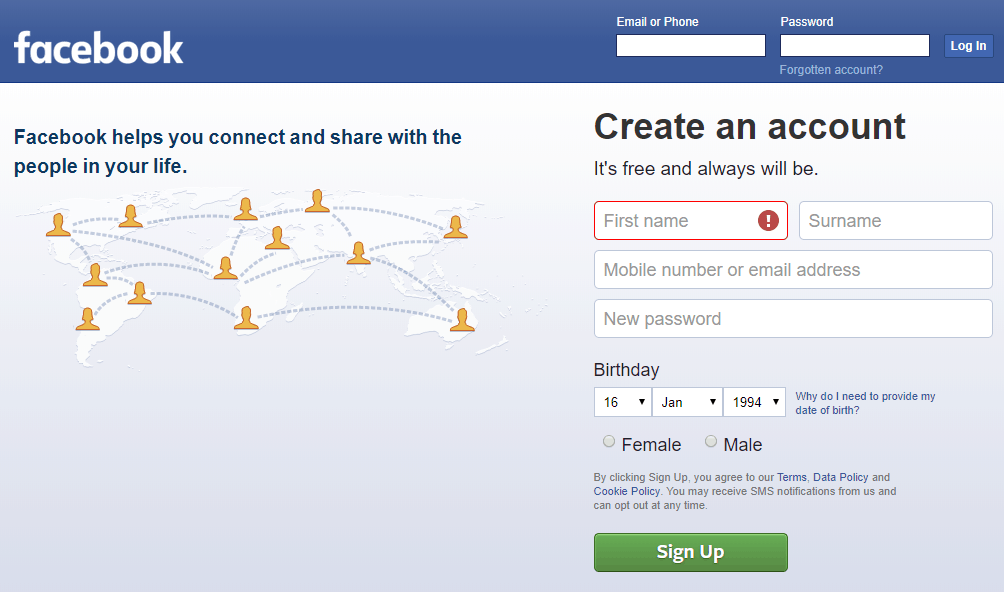Social media has helped to make the world more connected. Despite its ability to bring people together from all corners of the globe, these connections are also providing intelligent hackers with access to sensitive information that belongs to both companies and individuals.
Unfortunately, many people have almost an inherent trust in social media, and many cybercriminals are attempting to capitalize on this misjudgment.
That is because many people assume it is impossible to experience hacking on social media; however, it is possible, and it could lead to serious repercussions for your business. If you’re not convinced, here are six ways a data hack can harm your social media marketing strategy.
#1 Account Hijacking
It is common for many brands to reserve their handle on a social media channel, even if they have no immediate plans to execute a campaign on the platform. By doing so, they will be able to develop a consistent presence on different networks, so their target audience can easily find them across social media.
However, many marketers make the mistake of neglecting the accounts they don’t use yet or no longer use. Unfortunately, a hacker could identify that your account is idle and hack it to post fraudulent posts under your brand’s name.

In addition to hijacking a social media channel, they might send false information or files to your target audience, which could damage your company’s reputation or could lead to your potential customers receiving virus-infected files or links.
Effectively protect an account by enabling two-factor authentication, which requires both a strong password and confirmation code. It can help to keep your accounts safe at all times.
#2 Third-Party Apps
While many brands take the steps to secure their social media accounts adequately, cybercriminals can still gain control of a profile through vulnerabilities in a third-party app that connects with a large social network.
For instance, cybercriminals have managed to gain access to Twitter accounts that belong to Amnesty International and Forbes due to a technical flaw in a Twitter Counter app, which has been designed for platform analysis.

Image credit: Amnesty International Twitter
It is therefore essential to be selective when choosing any third-party applications that will require account access. Only authorize legitimate apps for peace of mind when entering your account details, and ensure you understand exactly what you are authorizing when connecting an account to an app.
#3 Imposter Accounts
There are currently millions of accounts impersonating both people and brands on social media. While some promote commercial products and attack celebrities, others are tricking users into submitting their sensitive information, which can tarnish a company’s positive reputation.
Unfortunately, many companies are failing to recognize this growing threat, so you need to proactively tackle impersonation, or their reputation and customers will pay the price for their neglect.
#4 Unsecured Mobile Devices
Many people pick up a mobile device to connect to their social media networks, as they can browse with ease on-the-go at the tap of a button. While this is perfectly fine if a device remains in yours or an employee’s possession, but it could potentially lead to a data breach if the device is lost or stolen.

As a result, a hacker could gain access to a social media account and your company data at the touch of a button. Not only could they steal the information, but they could also send phishing messages or malware attacks to all your connections.
It is crucial to protect a device with a strong password. Using a reliable password manager can also enhance security by securely storing and managing access credentials, reducing the risk of unauthorized access to social accounts. You also should learn more about the best security software solutions at www.mcafee.com to protect every company device.
#5 Phishing Scams and Attacks
Many cybercriminals are regularly executing phishing scams on social media to dupe users into providing their personal data, such as their:
- Banking details
- Credit card numbers
- Passwords
- Business information
For instance, it was recently reported on social media that actor Rowan Atkinson had passed away, but it turned out to be a phishing scam. A post, which looked like it featured a video link, directed social media users to a page that stated their computer had been locked, directing them to call a number for technical support. However, when a user called the number, they spoke to scammers who were attempting to learn their credit card and personal details.
#6 Reconnaissance
Many cybercriminals will turn to social media when they have identified a clear target for an attack, such as a business or individual.
They will commonly research:
- Who works for a company
- An employee’s position
- Who they are friends with (both personally and professionally)
- Handles that could help them to gain access to an account
A cyberattack will be easier to execute if a significant amount of private information has been made public on a social media profile. They also might attempt to single out either a specific employee or a group of employees to find the information they need for an effective social media hack. Once a cybercriminal has gained access to one network, it will not prove difficult for them to take control of an entire structure.
Companies must consider the potential dangers personal social media accounts can have on their cybersecurity. For this reason, you should launch a strict social media policy that everyone must adhere to each day.
Conclusion
There is no single piece of software or tactic that can protect a social media strategy and, in turn, your business. Dependable security software should always be your first port of call when attempting to safeguard your onsite security and social platforms. However, there are other tactics you can employ to strengthen your channels.
For example, you should introduce a social media security policy, enable two-factor authentication, monitor imposter accounts, secure all mobile devices, and carefully select third-party social media applications.
Remember, cybersecurity can be a game of cat and mouse, so you cannot afford to underestimate a cybercriminal when developing a social media marketing strategy, email newsletter campaign, or when storing data in the cloud.
By Steve Conway
Steve Conway is a content marketing professional and inbound marketing expert. Previously, Steve worked as a marketing manager for a tech software start-up. He is passionate about discovering new software that will that will advance his already well-honed digital marketing techniques.